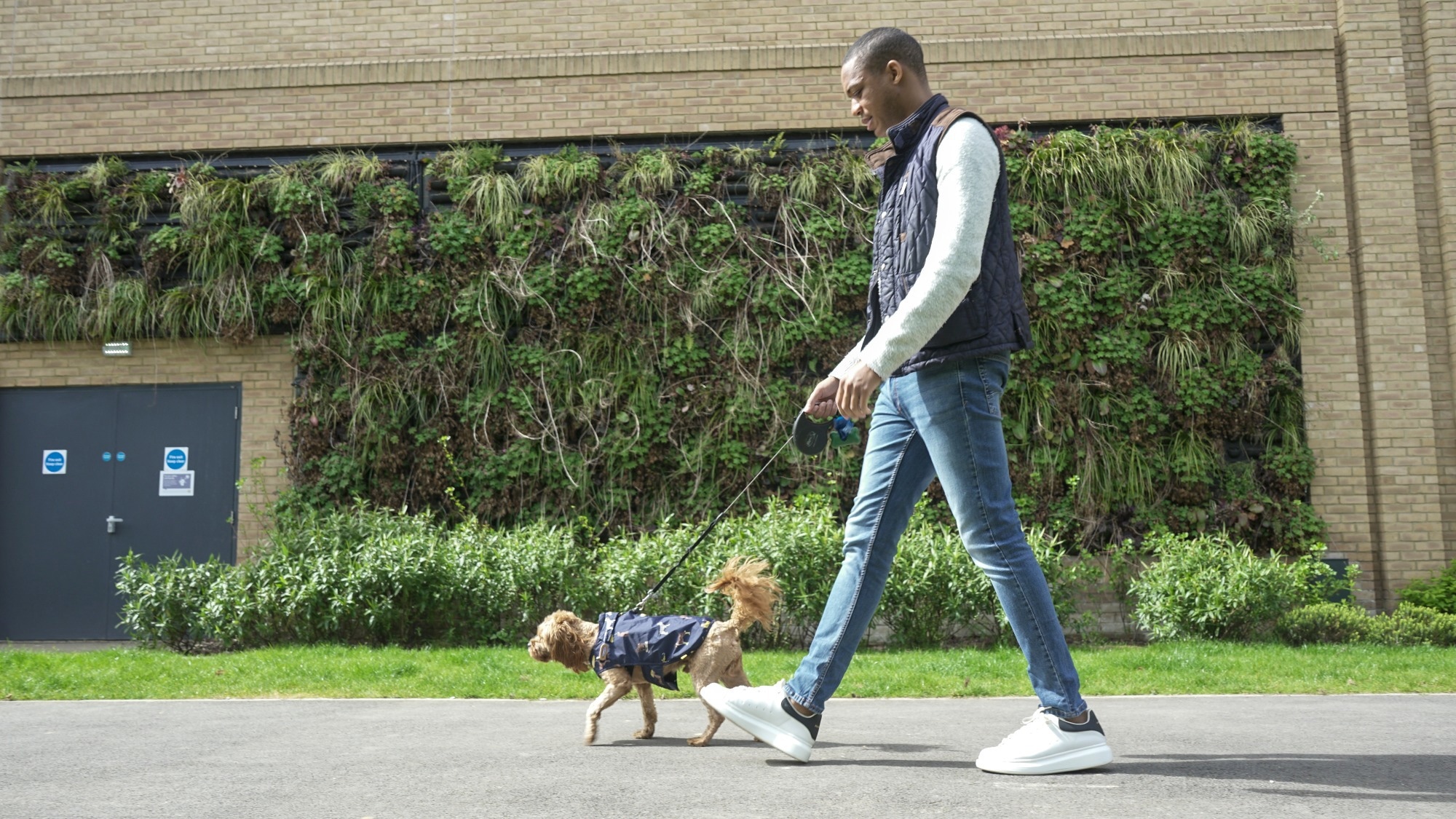 By Pooja Toshniwal PahariaReviewed by Lauren HardakerOct 30 2025
By Pooja Toshniwal PahariaReviewed by Lauren HardakerOct 30 2025By decoding the shared mechanics of movement across species, researchers reveal how a simple blend of planning and feedback keeps every step, whether insect, mouse, or human, steady and stable.
 Image credit: Cultura Creative/Shutterstock.com
Image credit: Cultura Creative/Shutterstock.com
A recent study published in Proceedings of the National Academy of Sciences reveals that animals from flies to humans share behavioural signatures of an integrated “feedforward-feedback” system to regulate movement. Combining predictive, velocity-driven actions with rapid, error-correcting adjustments allows species to maintain balance across diverse body types.
The researchers analyzed walking patterns in flies, rodents, and humans, finding that this balance between anticipation and correction underlies stable locomotion. This finding offers fresh insights into neuroscience, biomechanics, and the design of bioinspired robots.
Stable locomotion allows legged species to move efficiently despite internal noise and external disturbances. In humans and robots, this stability arises from error-dependent foot placement, where each step corrects recent movement errors. However, whether multi-legged animals use similar strategies remains unclear.
Most studies assume their movements follow fixed, velocity-driven patterns rather than adaptive corrections. Although feedforward and feedback control theories exist, they have not been reconciled across species, leaving key gaps in understanding how animals with diverse bodies and neural systems achieve the shared goal of stable locomotion.
A Unified Model to Compare Walking
In the present study, researchers developed a unified, computational model to uncover shared principles of controlling foot placement among species with vastly different body structures and nervous systems. They analyzed open-source kinematic datasets related to natural locomotion in Drosophila melanogaster flies, C57BL/6J murine animals, and humans. The analysis evaluated intrinsic movement variability under natural conditions rather than relying on externally induced perturbations, allowing them to infer control strategies from natural variability rather than imposed disturbances. The findings would provide ecologically relevant insights into stability mechanisms.
The team proposed a hierarchical feedforward-feedback control structure, incorporating two complementary components: a velocity-driven feedforward module that predicts ideal foot placement based on locomotor speed and direction, and a feedback module that rapidly corrects deviations from the estimated body state. The feedforward component shapes the overall gait pattern, whereas the feedback component rapidly refines balance and posture over shorter timescales.
The researchers tested two competing models, a feedforward-only model and a hierarchical feedforward-feedback model, to determine which better explained natural locomotion. Using linear regression and variance partitioning, they quantified the extent to which each control process explains the variability in foot placement and timing.
The team further assessed the contribution of feedback to locomotor stability by examining whether lateral or medial foot placement deviations reduced body state errors across consecutive steps. They also evaluated control magnitude (error correction per step), timescale (timespan required to restore stability), and leg- or direction-specific differences in feedback gains. By combining these analyses across species, researchers identified conserved neuromechanical signatures of movement control, revealing that predictive planning and rapid error correction sustain stable locomotion.
Common Patterns of Stable Locomotion
The study revealed shared behavioral signatures of foot stabilization during movement across flies, mice, and human beings, demonstrating that error-dependent foot placement, previously thought to be unique to humans, is a widespread stabilizing strategy among legged animals. Using a comprehensive feedforward-feedback framework, researchers revealed that while all species coordinate velocity- and state-responsive components for stability, the magnitude and urgency of control vary according to neuromechanical embodiment. Specifically, multi-legged species, such as flies and mice, exhibit lower control magnitudes and slower correction timescales compared to humans, reflecting their greater inherent passive stability.
Across all species, velocity-dependent feedforward control altered step length and duration but not step width: longer steps and shorter durations corresponded with higher velocities. Beyond this, body state errors predicted future side-to-side foot positioning in flies, mice, and humans, supporting the role of error-dependent feedback control in locomotion. These predictions outperformed baseline kinematic models, emerging well before the swing phase of each gait cycle, suggesting that animals proactively adjust foot placement to correct body state deviations.
Stability analyses further showed that foot placements guided by body state deviations help reduce errors across steps, confirming their stabilizing role. The spectral radii of eigenvalues were below one for all species, with smaller values in more multi-legged animals, indicating greater passive stability.
Control magnitude decreased while the correction timescale increased with the number of legs. Humans corrected errors rapidly within a single step, while flies required multiple steps. Importantly, multi-legged animals exhibited modular, leg- and direction-specific control: they corrected lateral errors more strongly than medial ones, and their posterior limbs operated over slower timescales than anterior limbs. In contrast, humans displayed symmetric bilateral control across both legs.
The study reveals that various animals, from flies to humans, share common feedforward-feedback coordination for stable, adaptive movement. By demonstrating that error-dependent foot placement is a shared strategy shaped by body mechanics, it bridges the fields of neuroscience, biomechanics, and robotics.
The findings deepen understanding of locomotor control and offer blueprints for designing more stable, bioinspired robots and potential biomarkers for gait and balance disorders. However, these results are inferred from locomotor variability during natural, unperturbed walking and do not directly identify underlying neural mechanisms. Future research synthesizing neural and biomechanical insights could propel both movement science and the development of bioinspired robots.
Download your PDF copy now!
Journal Reference
De Comite, A., & Seethapathi, N. (2025). Foot placement control underlies stable locomotion across species. Proceedings of the National Academy of Sciences, 122(43), e2413958122. DOI: 10.1073/pnas.2413958122. https://www.pnas.org/doi/10.1073/pnas.2413958122.